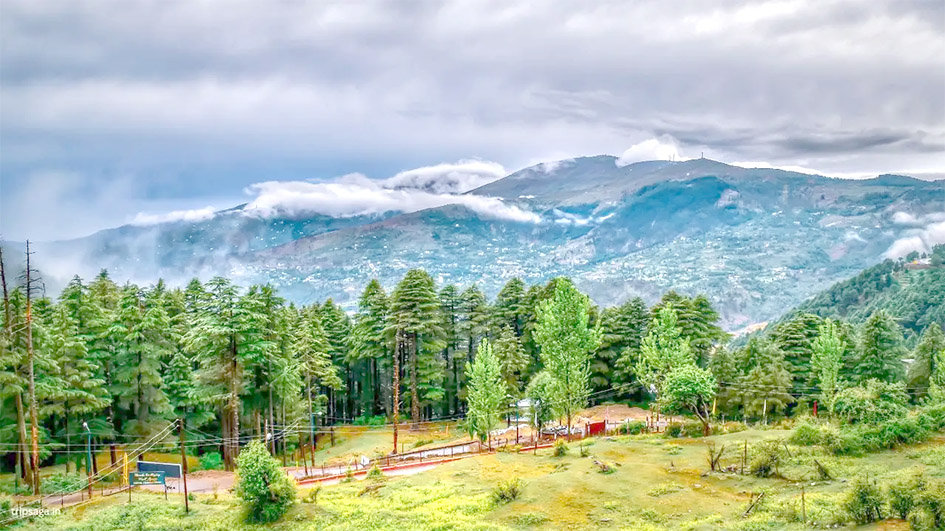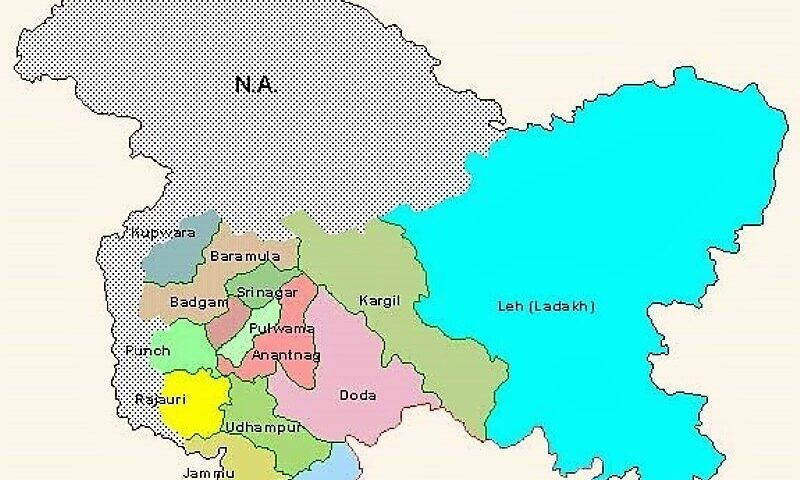From Train Derailments to Melting Glaciers—The Valley’s Landscape Is Reaching a Tipping Point
Disaster Strikes: Kathua Train Derailment as Wake-Up Call
On July 10, 2025, a goods train derailed in Lakhanpur, Kathua district, after flash floods and a cloudburst wrecked portions of the Jammu–Pathankot rail track. Though no casualties were reported, rail traffic was paralyzed, five passenger trains were delayed, and restoration crews scrambled to repair infrastructure amid surging waters and loose soil.
Rainfall Data
- Kathua recorded: 174.8mm rainfall (50% above monthly average)
- Cloudburst intensity: Peak rainfall within 30 minutes
- Resulting impacts: Waterlogging, track erosion, minor landslides
Officials from the Railway Protection Force and Disaster Management Authority confirmed the derailment was caused by an overflow of debris and unstable terrain—both symptoms of ecological imbalance.
Looking Beyond the Tracks: What’s Breaking the Landscape?
The derailment isn’t an isolated event. It fits into a pattern of climate-induced disruptions, accelerated by unchecked deforestation, land encroachments, and disappearing wetlands. J&K’s famed biodiversity and natural heritage are under siege.
Ecological Stress Points
| Ecological Zone | Main Threats | Recent Impact |
|---|---|---|
| Pir Panjal Range | Glacial retreat, deforestation | Reduced river flow, landslides |
| Wetlands (Wular, Dal) | Encroachments, siltation | Loss of biodiversity, bird habitats |
| Forest Belts | Illegal logging, urban sprawl | Soil erosion, flash floods |
| Rivers (Tawi, Jhelum) | Mining, pollution, mismanagement | Changed river courses, fish die-offs |
Climate Change Is Speeding Up
Experts at SKUAST Kashmir and India Meteorological Department (IMD) note disturbing climate trends across the region:
- Average temperature rise: Up to 1.6°C over the last 25 years
- Glaciers like Kolahoi and Thajiwas: Lost over 30% mass in recent decades
- Rainfall patterns: Increasingly erratic, with cloudbursts now more frequent
- Snowfall decline: Shorter winters disrupting agriculture and tourism
J&K’s ecological fabric—woven from snow-fed rivers, high-altitude forests, and sprawling wetlands—is fraying faster than previously predicted.
Deforestation: The Invisible Catalyst
Deforestation remains an underreported yet deeply damaging issue. Large tracts of forest in Kupwara, Ramban, and Anantnag have been illegally cleared for construction, agriculture, or timber trade.
Consequences of Tree Loss
- Reduced canopy interception, leading to uncontrolled runoff
- Weakening of soil stability, increasing landslide susceptibility
- Decline in carbon sequestration, further heating microclimates
- Disrupted wildlife corridors, threatening endemic species
Forest Department surveys show an alarming loss of over 9% green cover in some districts since 2020.
Is Lithium Mining the Next Threat?
With India exploring lithium reserves in Reasi and Kishtwar, conservationists worry about the environmental cost. Mining in ecologically fragile zones may:
- Displace local communities
- Pollute rivers with heavy metals
- Destroy critical alpine and forest ecosystems
Despite government assurances, critics argue that “green minerals” should not come at the cost of green landscapes.
Human Settlements Encroaching Nature
Urban expansion, especially in Srinagar and Jammu, is pushing into floodplains, hill slopes, and wetlands. Builders skirt regulations, and lack of master planning results in unchecked development.
- Illegal colonies near wetlands: Increase siltation and pollution
- Expansion into landslide-prone zones: Raises disaster risk
- Poor drainage systems: Intensify flooding during monsoons
The result? Human vulnerability rising even as natural buffers vanish.
Flash Floods: A Recurring Nightmare
The derailment in Kathua echoes dozens of flood events across Kashmir in recent years:
- Verinag (2023): Landslide buried two homes
- Ganderbal (2024): Flood cut off three villages for 48 hours
- Pulwama (2025): Farmers lost ₹2 crore worth of crop due to river overflow
These events are directly linked to runoff from deforested slopes, melting glaciers, and altered river dynamics.
What Needs to Be Done: A Climate-Resilience Roadmap
Short-Term Measures
- Disaster preparedness & early warning systems in vulnerable zones
- Stronger zoning laws to prevent construction in ecologically sensitive areas
- Wetland fencing and clean-up drives, especially around Dal and Wular
- Rehabilitation of degraded forest land through community plantations
Long-Term Strategies
- Climate resilience integration in governance and policy planning
- Afforestation drives focused on native species
- Community education and eco-tourism to build public ownership
- Cross-border collaboration for Himalayan ecosystem conservation
- Promote Green Infrastructure Development Models
Final Thoughts: A Valley at Crossroads
Jammu & Kashmir is not just a tourism haven—it’s a climate front line. The derailment in Kathua, the shrinking wetlands, and the vanishing tree cover point to a future that demands immediate course correction. If ecological balance is not restored, nature will continue its protests—not through headlines, but through landslides, droughts, floods, and silenced rivers.
It’s time for governance, civil society, and communities to come together, turning warnings into action and scars into strategy.




